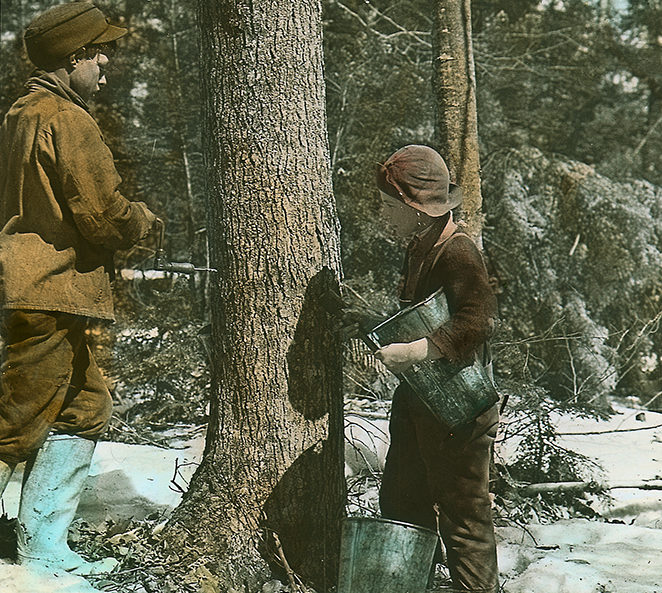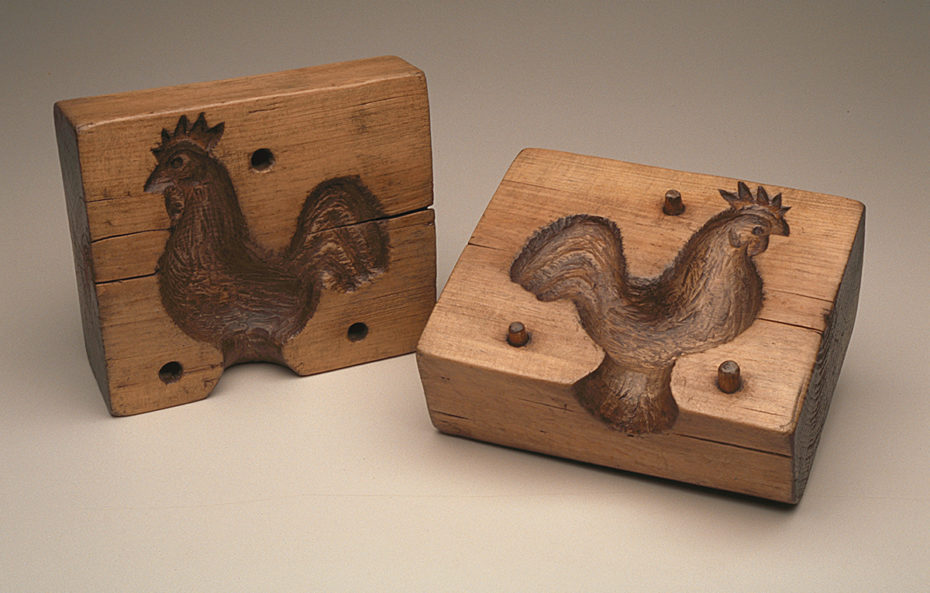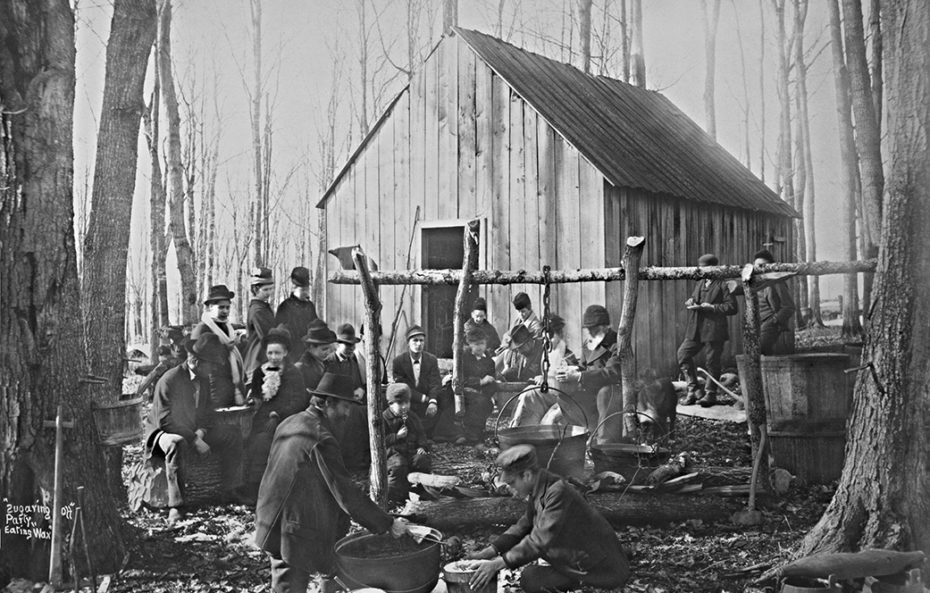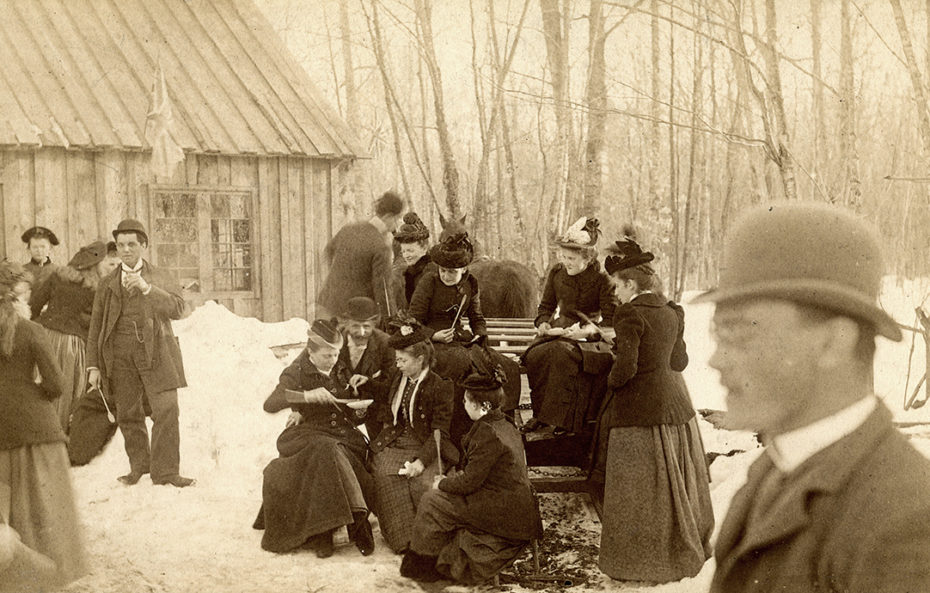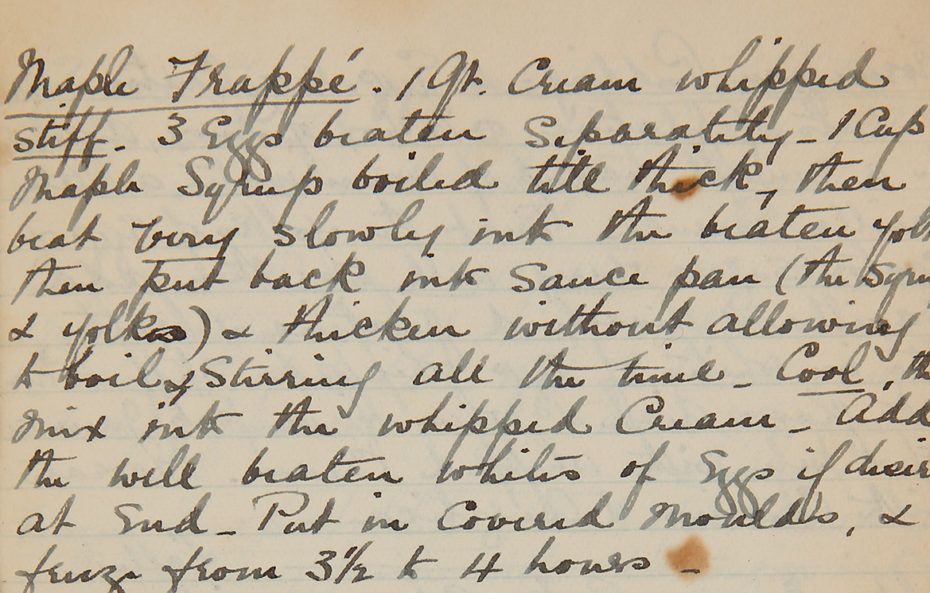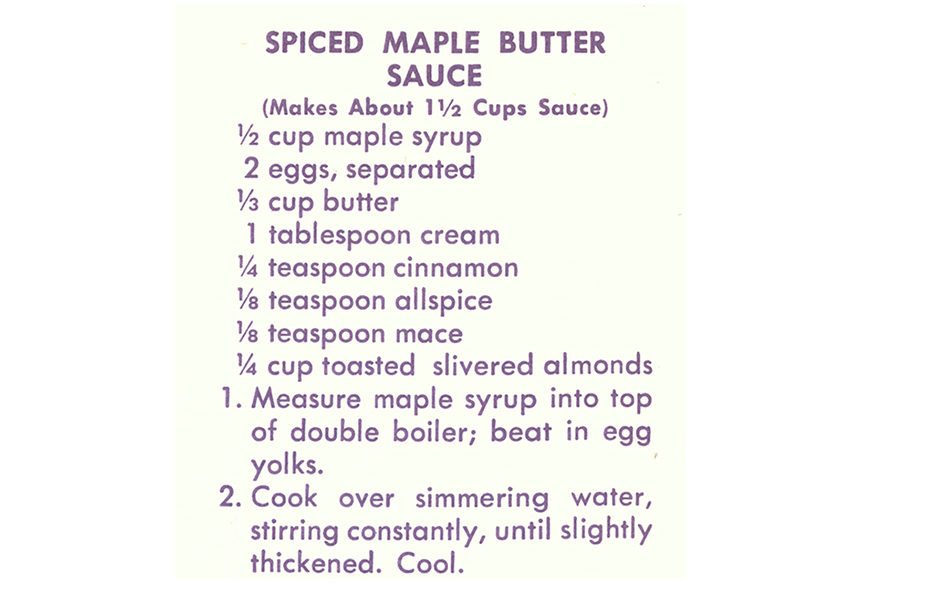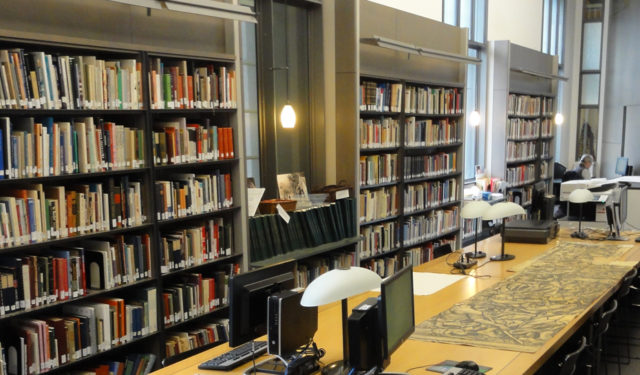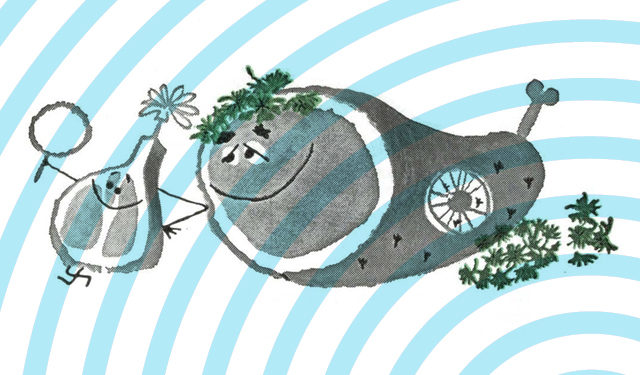Maple sugaring season
With sugaring season around the corner, we take a look at maple syrup and some recipes from the Museum's archives that celebrate it!
March 14, 2022
An authentic local Quebec product, maple syrup is a popular cooking ingredient at any time of year. However, spring is the season associated with harvesting maple sap, boiling it down and, of course, traditional sugaring-off parties at the cabane à sucre with family and friends. To see how maple syrup has become part of our culinary traditions, I took a deep dive into the cookbooks and recipe booklets of the Museum’s Recipes and Food Collection, where I made some decidedly mouth-watering discoveries!
Long before the arrival of European colonists, Indigenous peoples were harvesting and using maple sap. The first full moon of spring was called the Sugar Moon as it marked the month when the precious liquid was harvested. The sap was used in various ways, to sweeten bannock or season stews, for example. Indigenous peoples also used evaporation to produce concentrated versions of maple sap. Following contact with the French, they began boiling maple sap for longer periods in metal pots. This enhanced evaporation process produced maple syrup and maple sugar.
In the 17th and 18th centuries, people would set up makeshift sugar shacks near their homes to create their own reserves of sweets. The sugar produced was moulded into small loaves from which pieces could be broken off as needed. Maple sugar was not only considered an edible delicacy, it also was thought to have medicinal properties. Diderot and d’Alembert’s Encyclopédie (1751-1772) noted that it was recommended for “colds & lung conditions.” Another good reason to treat yourself!
Maple sugar also gave rise to an unexpected form of folk art: sugar moulds. Although maple sugar was formed into small loaves for many years, in the early 20th century, people began creating more interesting shapes with the help of wooden moulds that were both attractive and practical.
Up to 1850 and even later, colonists would collect maple sap in pails or small tubs and then carry them using yokes hanging over their shoulders. To make syrup, they would boil the maple water over an open fire in large kettles hanging from wooden racks.
Modern maple syrup production practices began around the middle of the 19th century with the use of metal sap spouts in the trees and sheet iron pans and flat-bottomed evaporators used to boil the sap, all of which helped increase the quantity and quality of maple syrup.
Maple products are sold in public markets, where one can find sugar loaves, syrup and even mini maple sugar cones. City dwellers nostalgic for country life can also attend sugaring-off parties at sugar shacks where they can eat, sing, dance and satisfy their sweet tooth with fresh-made taffy, also known as maple syrup on snow.
Although it remains a product closely associated with the return of spring, maple syrup is an integral part of our culinary heritage. Delicious served as is, it is also used in a variety of dishes. In fact, my exploration of the Museum’s many recipes turned up some very appealing and at times surprising concoctions. This frozen maple frappé sounds like an ideal way to enjoy the sweetness of maple during the summer months.
As for me, I am very tempted to surprise my guests with this spiced maple butter sauce at my next dinner party!
Today, maple products represent one of Quebec’s biggest food exports. In fact, the province holds the title of world’s largest producer of maple syrup. Maple butter, sugar, and lollipops are also quite popular, as are the many Quebec-made alcoholic beverages that feature our local sugar. Maple-flavoured wine, cream liqueur, gin, brandy, vodka and whisky are now sought-after libations on many a table year round!

